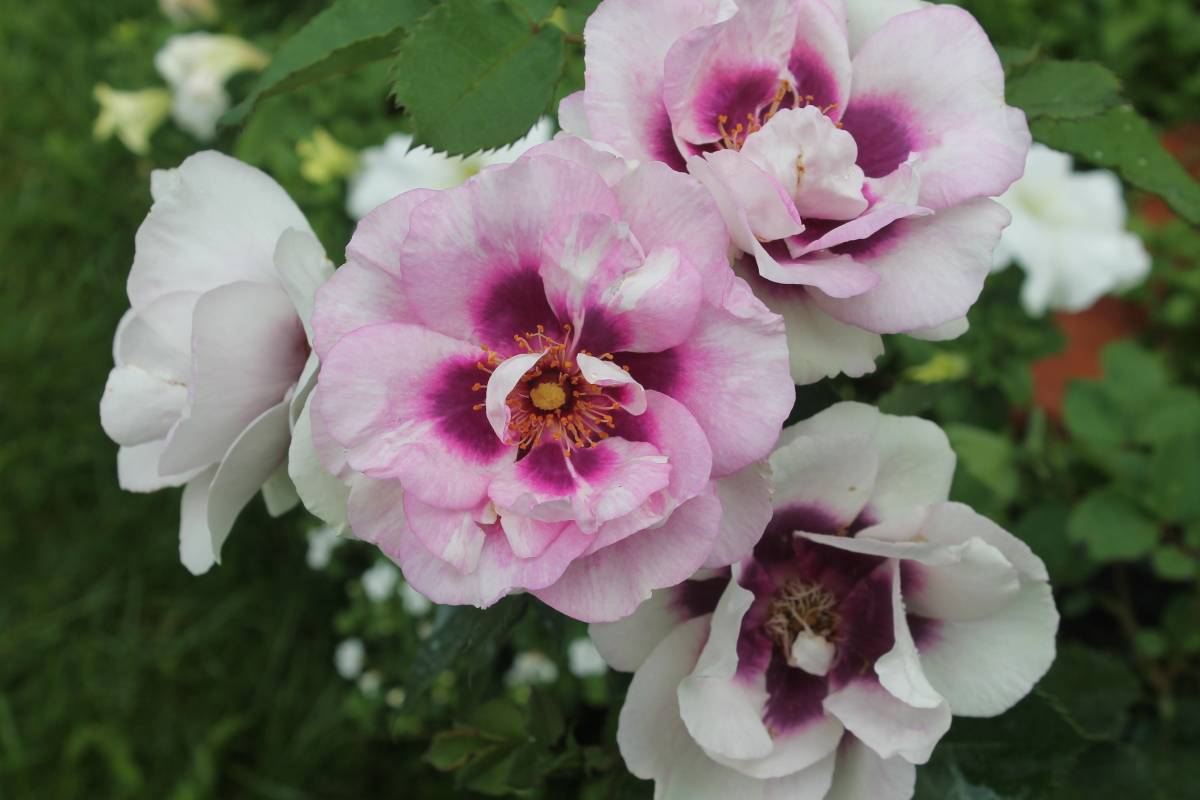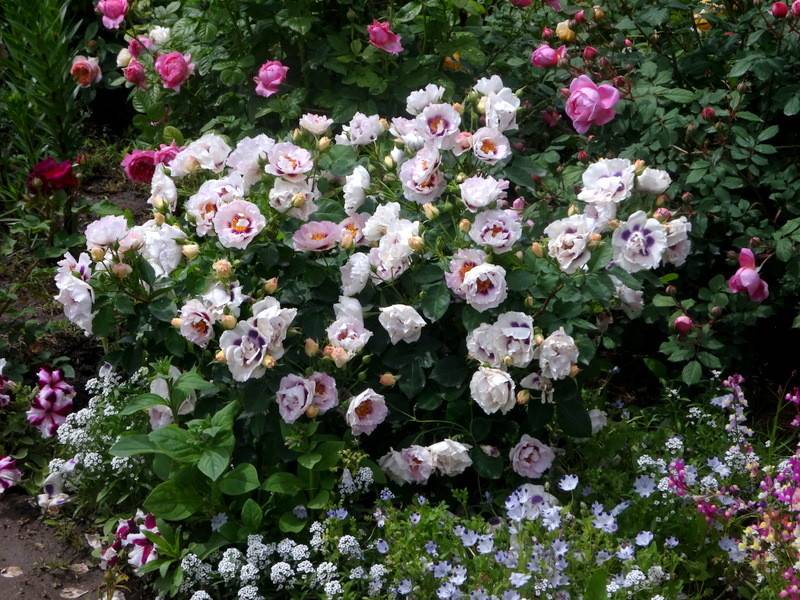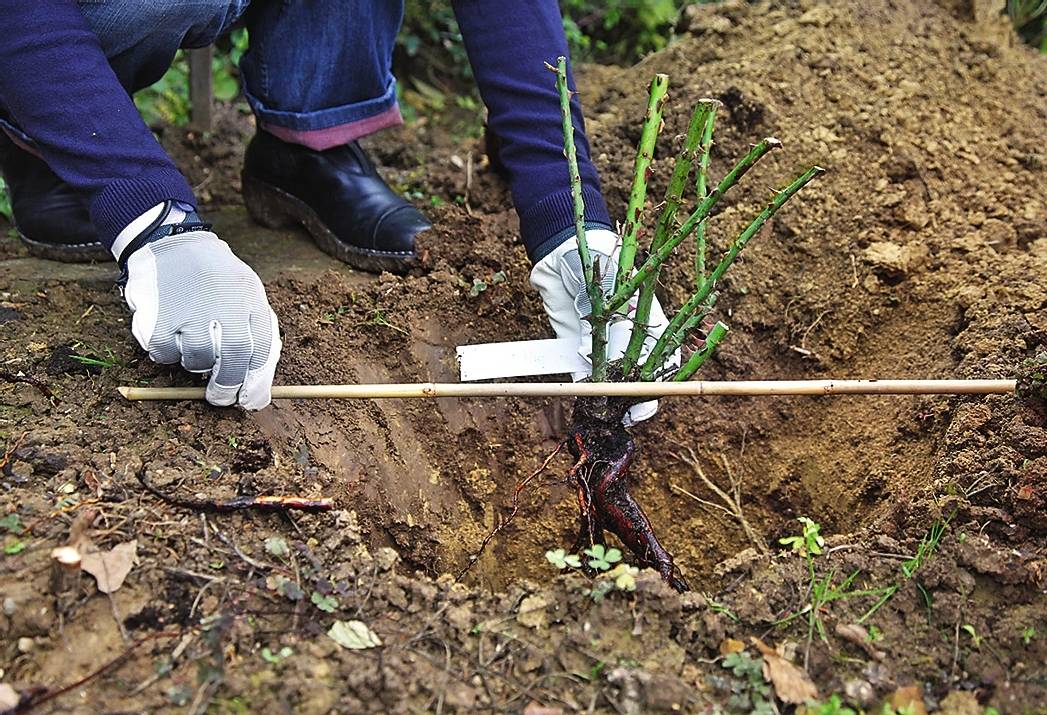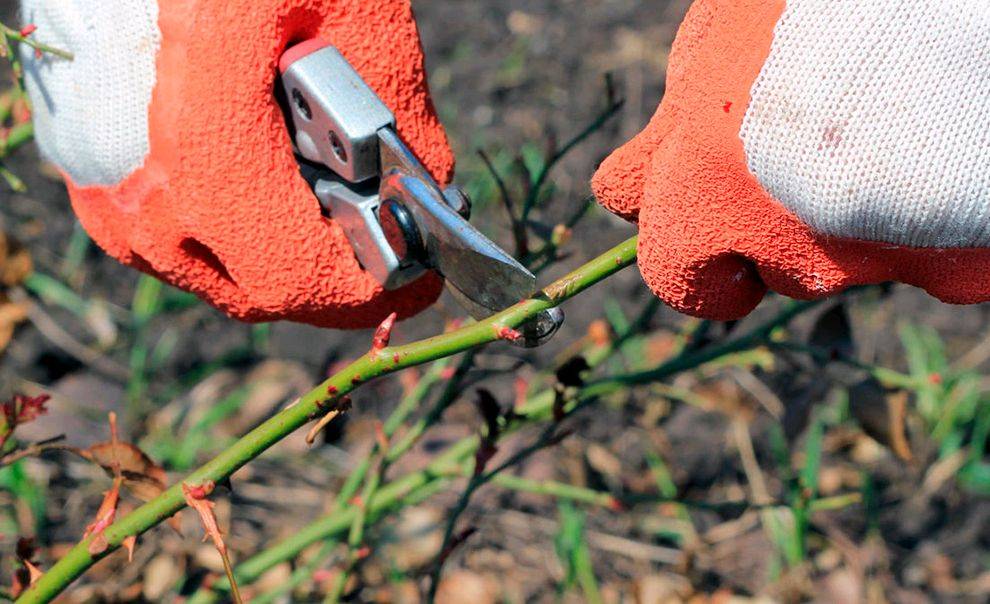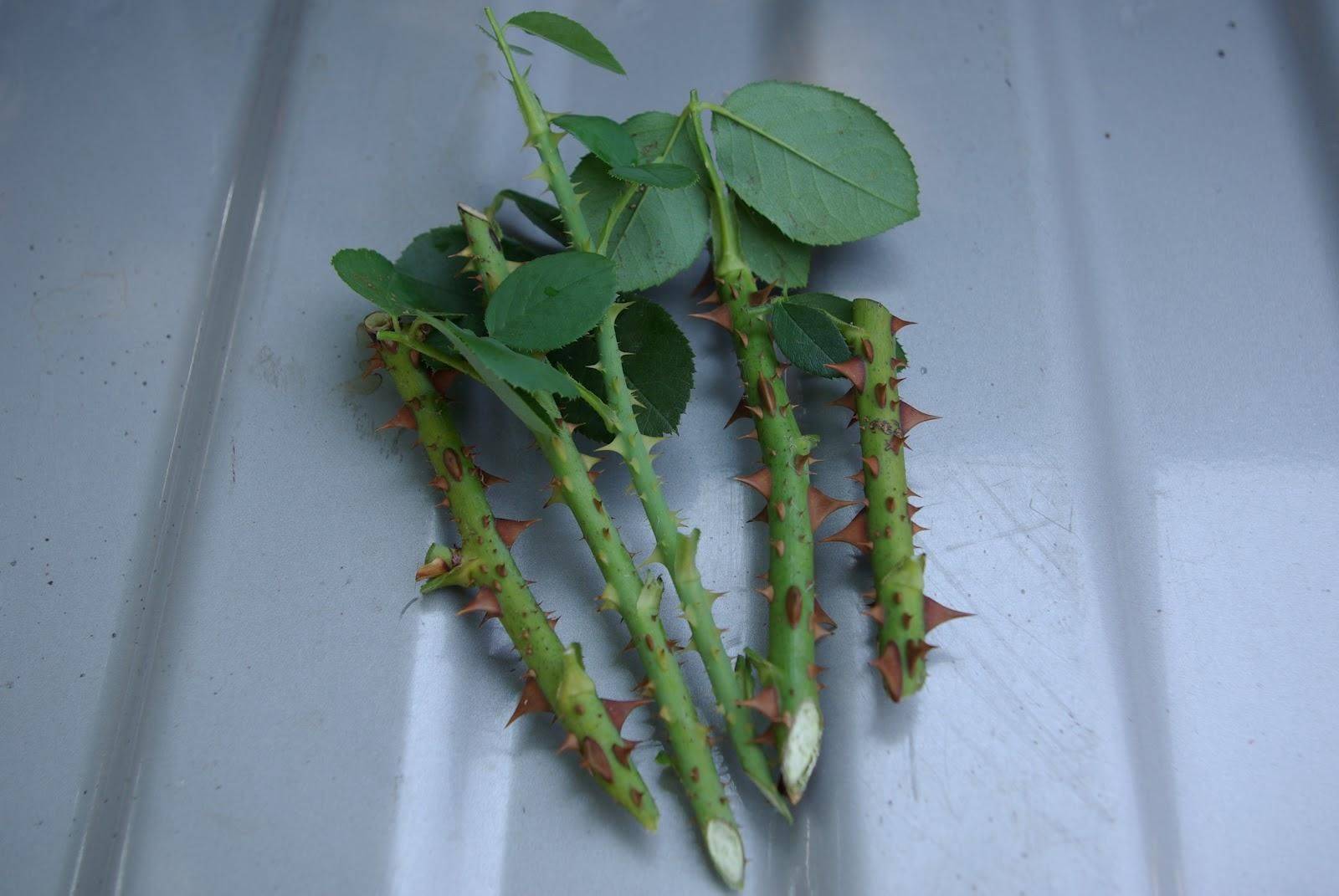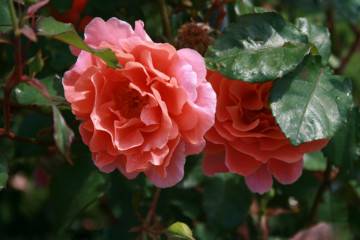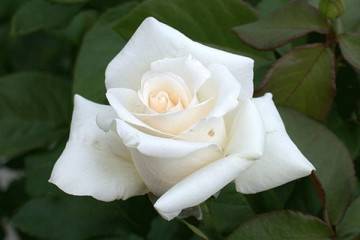Rose Eyes for You
Content:
The English floribunda rose called Eyes for You is a real treat for the eyes. The flower looks very unusual, being something between a forget-me-not, a rosehip and a lush rose.
Rose Ice for You (Rose Eyes for You) - what is this variety, history of creation
The Englishman Peter James (P. James) managed to get a very special variety in 2008. The material for breeding was the Persian rose (Rosa persica) and the Blue for you hybrid rose variety.
Brief description, characteristic
On average, fairly compact bushes grow up to 75-130 cm.The growth rate is low, so many gardeners perceive the variety as one of the varieties of drift roses (for containers). There are examples of growing on a trunk. The crown spreads 70 cm wide. Each shoot is directed straight up, straight, with a large number of thorns. The leaf is bright green, medium-sized, glossy.
The flowers combine shades of lilac and lilac, they themselves are semi-double, up to 10 cm in diameter. Each corolla consists of 20 petals with a wavy edge. The buds are combined in a brush of 3-7 pieces. The shape of the corolla as it opens, changes from a conical bud to a flat-bowl-shaped one. The buds that have not yet opened are painted in a yellow-cream shade with a pinkish tip.
Advantages and disadvantages of the variety
Among the most important advantages of the variety:
- unique color of petals;
- unpretentiousness to the place of growth;
- abundant flowering;
- resistance to black spot and powdery mildew.
Disadvantages are also noted:
- rapid shedding of petals (after 3 days on average);
- Ice for Yu - rose with variability of colors;
- poor tolerance of the scorching sun and rains that spoil the flowers.
Use in landscape design
The Aes Fo Yu variety is suitable for single planting, in flower beds and in flower beds. They can be supplemented with a rose garden, surrounded by flowers of other shades. Most harmoniously, according to gardeners' reviews, the flower looks next to the Blue for you and Burgundy Ice varieties. Since many roses are taller, Eyes for You is planted in the foreground of multi-tiered plantings.
Growing a flower: how to plant it in open ground
This variety can be planted and successfully grown in the middle lane, if only it is covered for the winter, and planted in quiet places, protected from through winds. Frost resistance - up to -20 ° С.
In what form is the landing
Since we are talking about a complex breeding hybrid, it is distributed in the trade network exclusively by seedlings obtained in specialized nurseries. Today the official suppliers are Great Britain and Poland. Already from a rooted bush, you can get cuttings for vegetative propagation.
What time is the boarding
Spring is best suited for planting.As soon as the soil warms up to + 10 ° С, you can start work. Usually, seedlings planted in spring take root in 9 cases out of 10.
Location selection
The site is chosen based on several conditions at once:
- On 1 or 2 sides, the bush should be protected from the winds by the walls of the house, a fence or more tall plantings.
- The sun illuminates the rose for about 4 hours a day, the rest of the time requires partial shade.
- Water should not accumulate at the roots, so the planting site is chosen on a small hill.
How to prepare the soil and flower for planting
The place for the future planting of the seedling is prepared in advance. Since autumn, for spring planting, the soil is dug up, bringing in as much organic matter as possible: humus, peat, compost. If planted in the fall, then this operation is carried out in the summer in 1 month. Additionally, sand and wood ash are added for digging, especially on acidic soils.
A seedling for spring planting should not have open buds in order to start growing in a new place. If the planting is carried out in the fall, then all the shoots are shortened, leaving only 15 cm and 2-3 buds from each branch.
Planting procedure step by step
The order of work is as follows:
- The roots of the seedling are shortened to 30 cm, after which they are soaked for about 10 hours in a solution of a growth regulator.
- The planting hole is dug 40 cm deep.
- 50 cm (minimum) are left between the bushes.
- At the bottom, 5-7 cm of drainage is poured (expanded clay, small pebbles).
- The roots are lowered into the hole so as to deepen the place of the scion by 5 cm.
- Fall asleep with fertile soil, which is mixed with about 50 g of superphosphate.
The newly planted bush is watered abundantly, and the trunk circle is mulched.
Plant care
In general, the rules for caring for this variety differ little from the classical agrotechnics of floribunda-type roses.
Watering rules and humidity
Stagnant water at the roots is detrimental to the bush, as well as prolonged drought. In moderately warm summers with a lack of rain, watering is carried out once a week. Enough for 5 liters of water for each bush. In the heat, the frequency of watering is increased to 1 time in 3 days.
Sprinkling is carried out only in drought, and it is performed exclusively in the early morning or after sunset. Be sure to make sure that the spray of water does not fall on the petals, which from this lose their attractive appearance.
Top dressing and soil quality
In general, there are not many requirements for the soil: good air permeability and a pH level of 5.5-6.5. Top dressing is carried out in several stages:
- Before bud break, add 30 g of ammonium nitrate per 1 m2 to the soil.
- During the period of forcing the buds, ammonium nitrate is reintroduced about 40 g per 1 m2.
- During the flowering period, with an interval of 3 weeks, watering is carried out with a mullein solution (1:10).
- In the fall, add superphosphate and potassium salt at 40 g per 1 m2.
Accurate adherence to all stages will ensure good growth and abundant flowering.
Pruning and replanting
Spring pruning is done before bud break. A maximum of 10 buds can be left on each stem. Only in this case will the bush have enough strength for abundant flowering.
In summer and autumn, only sanitary pruning is performed, removing all damaged and dried branches.
A transplant, if needed, is carried out in the spring, when the soil has already thawed, but the buds have not yet begun to grow.
Features of wintering a flower
Since the frost resistance of the bushes is medium (up to -20 ° C), it is recommended to cover them even in the middle lane. To do this, install arcs under which a "snowdrift" of fallen leaves and needles is poured. A cloth of agrotextile is stretched over it. If the area is characterized by snowy winters, then spruce branches should be laid on top for better snow retention.
Blooming rose
Abundant and continuous flowering begins in June. The disadvantage of this variety is the rapid flow of the petals, but new corollas bloom continuously. The bush is almost never empty.Flowers close at night, and bloom again in the morning.
If the weather is cool, then the color of the petals acquires the greatest contrast. If the cloudy weather drags on, the buds may not open.
A period of activity and rest
Bloom lasts from June to September. The foliage falls off about the first week after the first frost. In spring, budding begins after the soil warms up above +12 ° C.
Care during and after flowering
During the entire time, while the bush is blooming, it is necessary to cut off the fallen flowers all the time. If this is not done, the plant will try to set seeds, which will negatively affect the quantity and quality of the buds.
What to do if it does not bloom, possible reasons
Gardeners identify two main reasons why flowering may not occur:
- Poor illumination of the site. In strong shade, the buds do not bloom.
- Lack of nutrients. It is necessary to add mullein infusion or complete mineral fertilizer.
Other reasons may include: disease, pest infestation, root rot due to excessive soil moisture.
Flower propagation
If the site already has an adult rose bush Eyes for You, then it may well be used to obtain planting material (cuttings).
The hybrid variety does not propagate by seeds, since its varietal characteristics are not transmitted in this way.
When is it produced
The best time to start work is April. At this time, the soil has already melted and you can inspect the bush for standard pruning. Shoots longer than 10 cm can be used to produce cuttings. Over the previous year, they have accumulated enough nutrients to grow roots.
Detailed description
Immediately after cutting, all 12-15 cm long stems with 2-3 buds are wrapped in damp newspaper, then in a bag (leaving the tops not closed) and placed in a cool dark place (+4 ° C). After 4 weeks, all specimens that have started to grow are examined and selected.
All seedlings are buried in the open field, covering the top with a cut off top of a plastic bottle with a cork. Then they regularly inspect and water such a greenhouse. In it, the seedlings will have to grow until mid-June, after which the bottle can be removed. The transplant is carried out, if necessary, at the end of August.
Diseases, pests and ways to control them
Roses can be harmed by: aphids, spider mites, nematodes, whitefly. Against them, preventive treatments with Bordeaux liquid are carried out immediately after budding in 3 doses with an interval of 1 week, and they are completed by spraying with solutions of the appropriate insecticides. The best protection against fungal diseases is the correct agricultural technique, while the submitted variety is resistant to the most common of them: black spot and powdery mildew.
A beautiful rose of unusual color is a noticeable and refined decoration of a flower bed and a flower garden. For more than 10 years, the Ice fo Yu variety has been flaunting in Russian gardens and has been highly appreciated by collectors.
